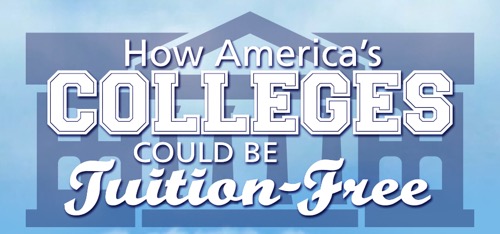
   |
[Headlines] (HL-과학/기술/교육) How Free Is 'Free College?'
최고관리자 | 17-02-20 06:57

Some people say the United States higher education system is the best in the world. But the cost of a college education in the U.S. can be very high -- about 70 percent of students graduate with some debt. In 2014, the total amount of that debt in the U.S. reached about $1.2 trillion. Norway, Finland, Germany, Mexico and Brazil are very different countries. But they all have one thing in common: citizens can attend public universities for little to no cost. That is why some American lawmakers are looking to other countries as models for change. During his 2016 presidential campaign, Senator Bernie Sanders said the U.S needed to offer free college. Sanders’ presidential campaign was unsuccessful. But he is not alone in the fight for free education. In 2014, Tennessee became the first state to provide free community college to recent high school graduates. Community colleges are smaller, public schools that usually offer two-year degree programs. The schools also provide general education classes at low cost to students who plan to transfer to a four-year college. Earlier this month, Tennessee reported a 30 percent increase in the number of students attending community college for the first time. Oregon also has a program like Tennessee’s. In fall of 2016, the Oregon program paid for at least part of the cost for 6,745 students to attend community college.
* higher education = 고등 교육, 대학 교육/ debt = 빚, 부채/ have ~ in common = (특징 등을) 공통적으로 지니다/ lawmaker = 입법자/ look to ~ = (개선 방안을 찾기 위해) ~을 생각해[고려해] 보다/ community college = 지역 전문대학(주로 인근 지역 출신 학생들에게 실용적 기술 위주의 교육을 하는 2년제 대학)/ transfer to ~ = ~로 옮기다/ at least = 적어도[최소한]
The idea of free college is spreading in the U.S. Last month, New York Governor Andrew Cuomo announced his own plan. It centers on families making less than $125,000 a year. It would permit their children to attend the state’s public universities for free. Officials say Cuomo’s plan could cost as much as $163 million per year by 2019. Richard Vedder is director of the Center for College Affordability and Productivity, a research organization. He feels some New Yorkers may not like an increase in taxes to pay for Cuomo’s plan and could move to different states. He also thinks it is fair to ask students to pay for some of the cost of college. "First of all, the students are the primary beneficiaries of the college education. Most of them, after college, will earn a good deal more income than they did before going to college. A lot of the students who go to college can afford to pay tuition. The tuition fee is not an obstacle that keeps them from attending. So, asking them to pay tuition fees seems to be reasonable since they are getting a high return on the investment." Vedder says offering free education at public universities could also hurt competition. Vedder says it could make private schools less appealing to students.
* governor = (미국) 주지사/ center on ~ = ~에 초점을 맞추다/ primary = (순서・단계상으로) 최초[초기]의; 주된/ beneficiary = 수혜자; 수령인/ a good deal = 다수, 다량; [부사적; a ~] 많이(a great deal)/ obstacle = 장애, 장애물/ reasonable = 타장한, 합리적인, 합당한/ a high return on ~ = ~에 대한 높은 수익[이익]률/ appealing = 매력적인, 흥미로운; 호소하는
   |




